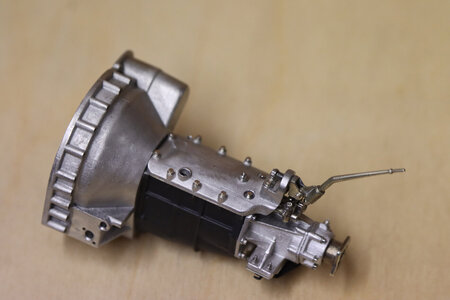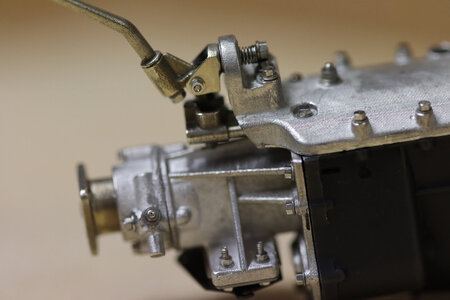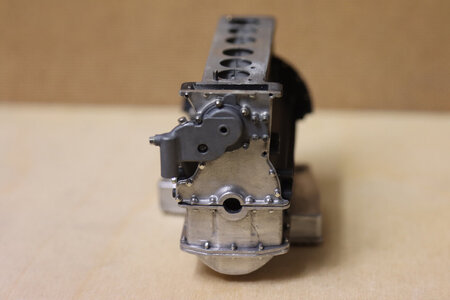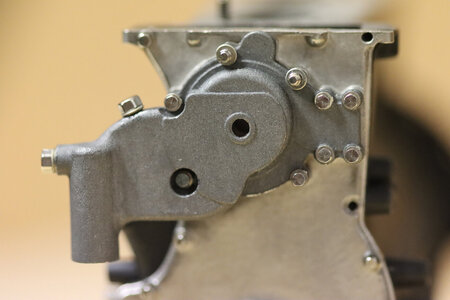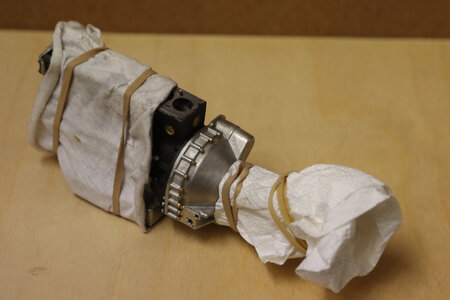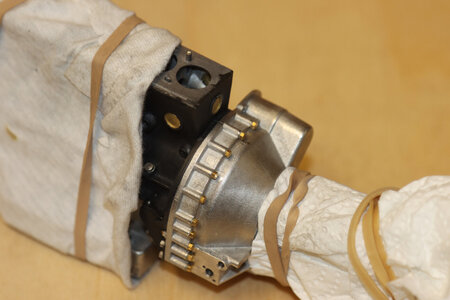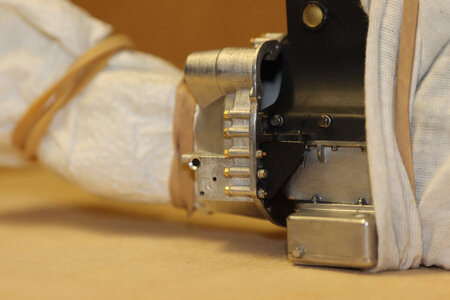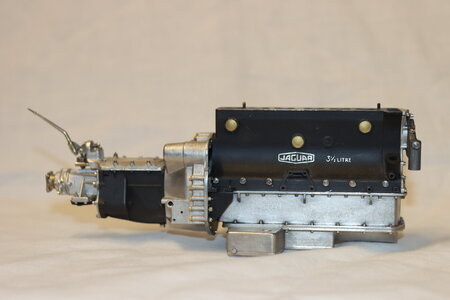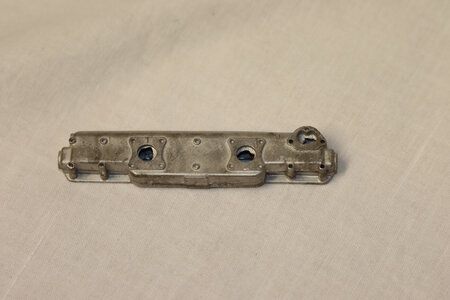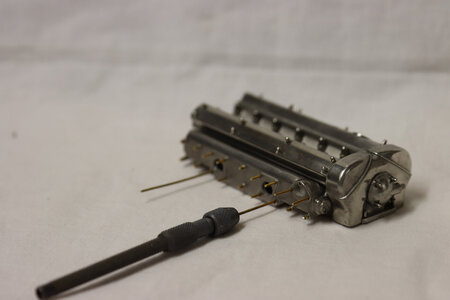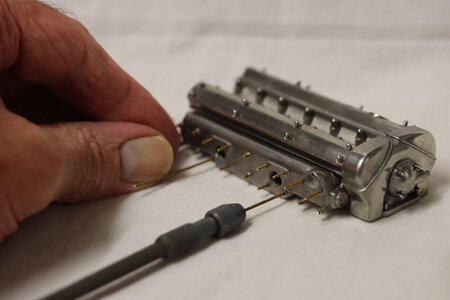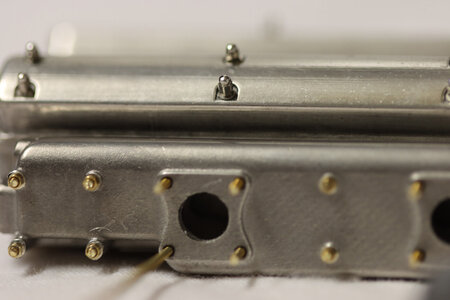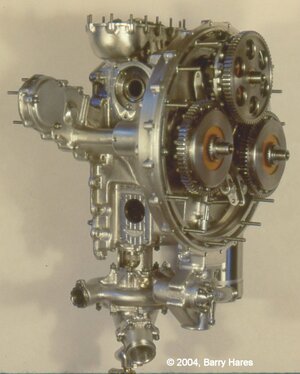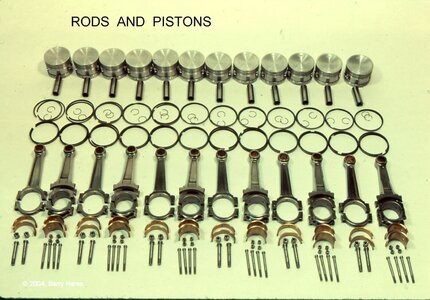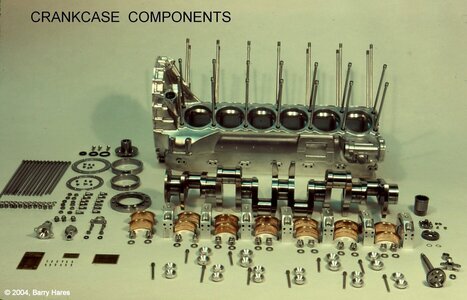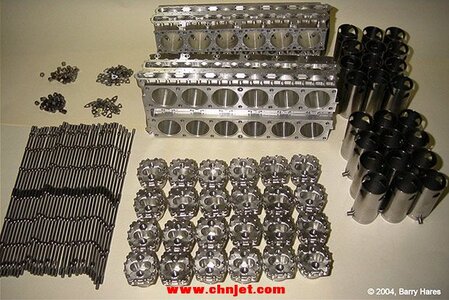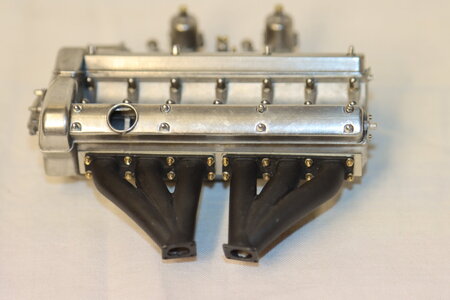Time to unit the engine with the transmission!
View attachment 186976
Why all wrapping? - well, the engine and gearbox are partially painted matt black, which is easily scratched or marked with oil from my hands, and there is a lot of handling required when mating these two components.
View attachment 186977
The bell housing is held on to the engine by a number of bolts and two brackets.
(Uwe, when you come to this part it is essential you use the template provided in order to make sure it all lines up. It took me about three hours to ensure I got it right!)
View attachment 186978
Right side of engine showing one of two support brackets on to the bell housing. These are a b****r to install, as the bolts holding the brackets to the engine are screwed into the crankcase on the
inside of the bracket.
View attachment 186979
View attachment 186980
Now comes a tale of disaster!!
The object above is the inlet manifold, holding the carbs and directing the petrol/air mix to the cylinders (doesn't look very efficient in terms of gas flowing, but it was designed in the late 1940's!)
The manifold has two castings, inner and outer, which have to be glued together before bolting onto the engine so holes can be drilled through.
As luck would have it, the inner casting had a very slight distortion on it, so after straightening it by hand, I glued them together and decided to hold them with spring clamps until the glue dried. The next day, I found the white metal had distorted badly, to the point where it was non-repairable. Disaster!
I e-mailed Uli at Autograph models (the kit manufacturer) and told him the sorry tale. He straight-away organised for the two pieces to be cast for me, and sent them to me
free of charge! Now this was a kit I had bought
five years ago! How many manufacturers would have gone that far? Full marks to Autograph!
View attachment 186987
Not a good photo, but it shows the manifold in position, and the method of inserting the studs to hold it. The studs are supplied min the form of 1.0 mm threaded rod, which can be held in a pin vice and screwed in to pre-drilled holes in the crankcase before being cut off to length.
View attachment 186988
Same process, but with large hand to give an idea of scale (Incidentally, if you want to see a really large scale engine, have a look at the Pocher models Ducatti being built by Peter Voogt. Some model!)
View attachment 186989
Again, not a good photo, but it shows the nuts and washers on some of the studs. The studs have still to be filed down to just above the nuts.
That's your lot for today!
Ted




